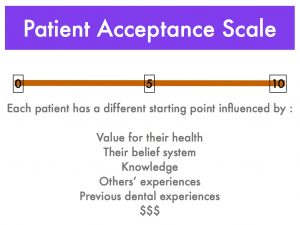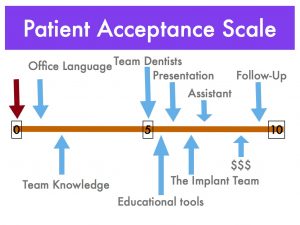Implant dentistry is a multi-disciplinary field. To achieve predictable success, you must organize a highly skilled and knowledgeable team that communicates well. Good planning requires a collaborative discussion and effective communication to deliver treatment that is organized, logical, efficient, and, ultimately, successful.
Collaboration may take place at any stage during the treatment…
Before referring your patient to a surgeon:
At this stage, you can contact the surgeon to give them a “heads-up” and discuss the following:
- Unique patient needs or previous experiences that may affect the treatment
- Issues regarding medical management
- What records are available and necessary
- Surgical topics to help you be more effective during your work-up
After patient consultation with the surgeon:
At this stage, you should collaborate with the surgeon in order to:
- Review findings
- Discuss treatment options, both ideal and alternative
- Discuss patient desires and financial issues
- Review the order and timing of the treatment stages
- Develop a comprehensive treatment letter
- Identify the need for consultation with other specialists
Team collaboration with patient:
Sometimes, it is necessary to have a meeting together with the patient, dentist, and surgeon. For example,
- A final meeting with a patient undergoing complex treatments
- To discuss possibilities and limitations from both surgical and prosthetic points of view
- To answer all questions thoroughly
Collaboration during treatment:
Throughout the patient’s treatment, collaboration between surgeon and dentist is important to:
- Discuss patient progress
- Discuss unexpected events or need for treatment modifications
- Coordinate schedules
- Offer support for necessary materials, components, etc.



